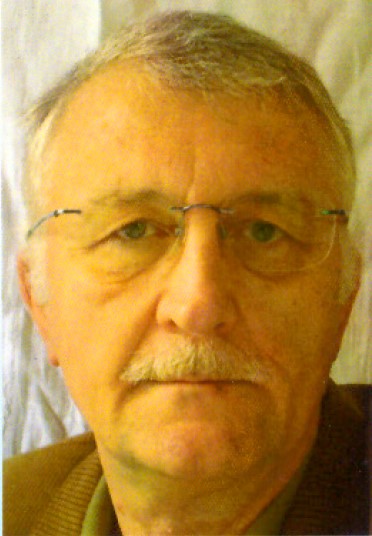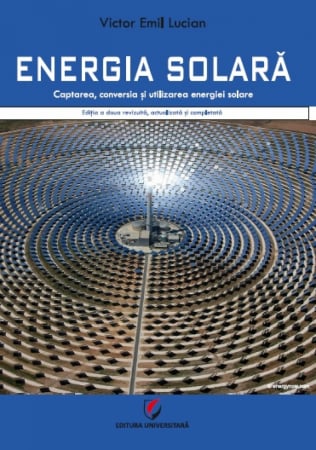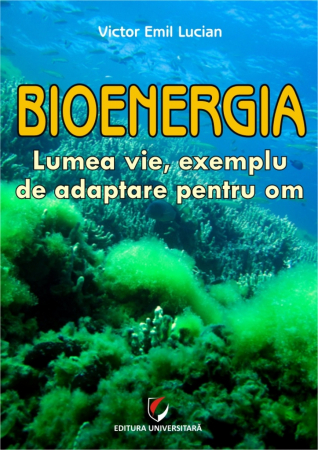Manuscript proposals: info@editurauniversitara.ro / 0745 204 115 //// Tracking orders Individuals / Sales:0745 200 718 / 0745 200 357 Orders Legal entities: 0721 722 783
ISBN: 978-606-28-1354-3
DOI: https://doi.org/10.5682/9786062813543
Publisher year: 2021
Edition: I
Pages: 256
Publisher: Editura Universitara
Author: Daniel Bacescu
Product Code:
9786062813543
Do you need help?
0745 200 718
/
0745 200 357
- Description
- Download (1)
- Authors
- Content
- More details
- Where to find it
- Reviews (0)
The paper presents a collection of problems frequently encountered in the disciplines of optical devices.
The problems have a complete solution in order to easily understand the application of specific formulas from the applied optics. For an additional help, in annex 1 of the paper is presented a collection of formulas from paraxial optics, in order to exempt the student to look for a certain relation in the available books. Also for an additional help, related to the definition of some optical quantities and some characteristics of optical devices, in annex 2 there is a collection of questions with answers, and in annex 3 there are all the mathematical formulas necessary in geometric optics.
In any optical problem, the sizes generically called paraxial characteristics are used. Of course, for a certain problem we do not need all these sizes. Certainly the power and focal length of the image are always used. For quick gauge calculations, the calculation can be greatly simplified if we neglect the thickness at the center, ie we are in the field of infinitely thin lenses.
Currently, Gauss's formulas and Newton's formulas will be used in the calculations. These formulas being related to the main points, respectively to the focal points, have a general character and apply to any optical system. Optical magnification formulas are also always used.
Observation:
In the engineering field, geometric quantities are expressed in millimeters. In the field of ophthalmology the unit of power is the diopter which represents the power of a lens with a focal length of one meter. To correlate these sizes, we must express the constructive sizes of the lens in meters or, if these sizes are expressed in millimeters, multiply the result by 1000.
The paper also presents problems of analysis and advanced synthesis of optical systems that use complex mathematical techniques such as optimization. Due to the high degree of complexity, they cannot be solved classically, by direct calculation by hand. It is recommended to develop automatic calculation programs or to use some ready-made programs by specialized companies, which are capable of complex iterative calculation. These problems are intended for a verification standard for the problems in question, so that, once we have the certainty of the correct results, we can use them to solve other problems.
The problems in the chapter "Problems solved in the discipline of Visual System Modeling" have been developed as an extension of the optics applied to biological optical systems. Thus it is shown that all formulas from a technical point of view can be used in such situations if we complete the set of known formulas with specific formulas the human eye (the image surface is the sphere, the human eye ages, and the focus is made by changing the constructive parameters of the lens).
This paper is intended for the training of students in the first, second, third and fourth year - optometry license - and students in the first and second year - master of advanced optometry, but can also be studied by graduates of a higher education, interested in technical optics or those interested in the design and operation of optical devices.
Also, the paper can be useful to students or graduates in the field of physics, eager to know the engineering optics of analysis and synthesis of optical components. In this sense an interesting problem would be the interaction between energy and matter, in the field of physics of high power lasers.
The paper can also be approached by students or graduates of higher education in the field of mathematics to research new methods of optimization, in addition to those established in the field of engineering, promoted in this paper.
In the mathematical field a problem of great complexity can be the attachment to the relations from the probability calculation, which, based on the experiences gained at each design, to anticipate the limits that can be reached, considering that optimizing a complex optical system consumes a lot of time ( often weeks or even months) and is based on many replays with changed initial conditions that are based only on the designer's experience. In other words, let's make the optimization program learn from our own experience.
The problems have a complete solution in order to easily understand the application of specific formulas from the applied optics. For an additional help, in annex 1 of the paper is presented a collection of formulas from paraxial optics, in order to exempt the student to look for a certain relation in the available books. Also for an additional help, related to the definition of some optical quantities and some characteristics of optical devices, in annex 2 there is a collection of questions with answers, and in annex 3 there are all the mathematical formulas necessary in geometric optics.
In any optical problem, the sizes generically called paraxial characteristics are used. Of course, for a certain problem we do not need all these sizes. Certainly the power and focal length of the image are always used. For quick gauge calculations, the calculation can be greatly simplified if we neglect the thickness at the center, ie we are in the field of infinitely thin lenses.
Currently, Gauss's formulas and Newton's formulas will be used in the calculations. These formulas being related to the main points, respectively to the focal points, have a general character and apply to any optical system. Optical magnification formulas are also always used.
Observation:
In the engineering field, geometric quantities are expressed in millimeters. In the field of ophthalmology the unit of power is the diopter which represents the power of a lens with a focal length of one meter. To correlate these sizes, we must express the constructive sizes of the lens in meters or, if these sizes are expressed in millimeters, multiply the result by 1000.
The paper also presents problems of analysis and advanced synthesis of optical systems that use complex mathematical techniques such as optimization. Due to the high degree of complexity, they cannot be solved classically, by direct calculation by hand. It is recommended to develop automatic calculation programs or to use some ready-made programs by specialized companies, which are capable of complex iterative calculation. These problems are intended for a verification standard for the problems in question, so that, once we have the certainty of the correct results, we can use them to solve other problems.
The problems in the chapter "Problems solved in the discipline of Visual System Modeling" have been developed as an extension of the optics applied to biological optical systems. Thus it is shown that all formulas from a technical point of view can be used in such situations if we complete the set of known formulas with specific formulas the human eye (the image surface is the sphere, the human eye ages, and the focus is made by changing the constructive parameters of the lens).
This paper is intended for the training of students in the first, second, third and fourth year - optometry license - and students in the first and second year - master of advanced optometry, but can also be studied by graduates of a higher education, interested in technical optics or those interested in the design and operation of optical devices.
Also, the paper can be useful to students or graduates in the field of physics, eager to know the engineering optics of analysis and synthesis of optical components. In this sense an interesting problem would be the interaction between energy and matter, in the field of physics of high power lasers.
The paper can also be approached by students or graduates of higher education in the field of mathematics to research new methods of optimization, in addition to those established in the field of engineering, promoted in this paper.
In the mathematical field a problem of great complexity can be the attachment to the relations from the probability calculation, which, based on the experiences gained at each design, to anticipate the limits that can be reached, considering that optimizing a complex optical system consumes a lot of time ( often weeks or even months) and is based on many replays with changed initial conditions that are based only on the designer's experience. In other words, let's make the optimization program learn from our own experience.
-
Optical devices. Problems solved in the ideal, paraxial and real field
Download

DANIEL BACESCU is a PhD professor at the Polytechnic University of Bucharest, Department of Mechatronics and Precision Mechanics.
He attended the courses of the Faculty of Mechanics, Department of Fine Mechanics, specialization Optical Devices.
In 1996 he defended his doctoral thesis Construction and improvement of the objectives of optical measurement systems and obtained the scientific title of doctor of engineering.
Publications: 4 books, 4 laboratory guidelines, 67 articles, 9 inventions, 2 innovations, 12 scientific research contracts.
Automatic calculation programs in the field of Applied Optics through which he completed research projects in the country and abroad, projects that allowed the initiation of new chapters in the field of optical devices.
Diploma and silver medal at the International Exhibition of Inventions in Geneva 2002, for participation in the patent Capteur optoelectronique pour l’identification de direction d’un ax, as co-author.
Diploma of Excellence and Third Prize at TIB 2003 - CONRO Salon (Conceived in Romania) for the functional model of the project Optoelectronic equipment for tracking and adaptive control of mini-robots, made within PNCDI - INVENT program.
He has been a founding member of the Romanian Association of Fine and Optical Mechanics (AMFOR) since 1990; founding member of the Polytechnic Inventors Club, since 1991; member of the Romanian Society of Mechatronics (SROMECA) since 1998.
Preface / 11
A. Problems solved in ideal optics / 18
B. Problems solved in paraxial optics / 26
C. Problems solved in the diopter of order III / 41
D. Problems solved in extra-paraxial optics / 69
E. Problems solved in the discipline of Visual System Modeling / 100
F. Problems solved for testing the graphs of optical aberrations / 113
Annex 1/125
Annex 2/212
Annex 3/223
Annex 4/239
Bibliography / 254
A. Problems solved in ideal optics / 18
B. Problems solved in paraxial optics / 26
C. Problems solved in the diopter of order III / 41
D. Problems solved in extra-paraxial optics / 69
E. Problems solved in the discipline of Visual System Modeling / 100
F. Problems solved for testing the graphs of optical aberrations / 113
Annex 1/125
Annex 2/212
Annex 3/223
Annex 4/239
Bibliography / 254
www.editurauniversitara.ro
If you want to express your opinion about this product you can add a review.
write a review
Customer Support Monday - Friday, between 8.00 - 16.00
0745 200 718 0745 200 357 comenzi@editurauniversitara.ro
6359.png)
![Optical devices. Problems solved in the ideal, paraxial and real field - Daniel Bacescu [1] Optical devices. Problems solved in the ideal, paraxial and real field - Daniel Bacescu [1]](https://gomagcdn.ro/domains/editurauniversitara.ro/files/product/large/bacescu-daniel_aparate-optice_bt-3432-2982.jpg)














